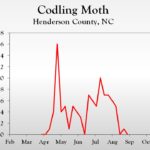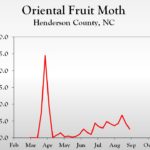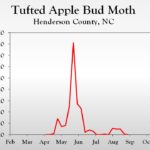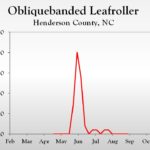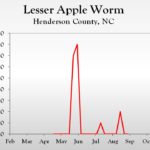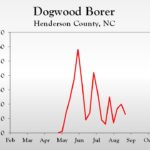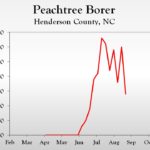WNC Orchard Insect Pest Populations – September 8, 2020
go.ncsu.edu/readext?730684
en Español / em Português
El inglés es el idioma de control de esta página. En la medida en que haya algún conflicto entre la traducción al inglés y la traducción, el inglés prevalece.
Al hacer clic en el enlace de traducción se activa un servicio de traducción gratuito para convertir la página al español. Al igual que con cualquier traducción por Internet, la conversión no es sensible al contexto y puede que no traduzca el texto en su significado original. NC State Extension no garantiza la exactitud del texto traducido. Por favor, tenga en cuenta que algunas aplicaciones y/o servicios pueden no funcionar como se espera cuando se traducen.
Português
Inglês é o idioma de controle desta página. Na medida que haja algum conflito entre o texto original em Inglês e a tradução, o Inglês prevalece.
Ao clicar no link de tradução, um serviço gratuito de tradução será ativado para converter a página para o Português. Como em qualquer tradução pela internet, a conversão não é sensivel ao contexto e pode não ocorrer a tradução para o significado orginal. O serviço de Extensão da Carolina do Norte (NC State Extension) não garante a exatidão do texto traduzido. Por favor, observe que algumas funções ou serviços podem não funcionar como esperado após a tradução.
English
English is the controlling language of this page. To the extent there is any conflict between the English text and the translation, English controls.
Clicking on the translation link activates a free translation service to convert the page to Spanish. As with any Internet translation, the conversion is not context-sensitive and may not translate the text to its original meaning. NC State Extension does not guarantee the accuracy of the translated text. Please note that some applications and/or services may not function as expected when translated.
Collapse ▲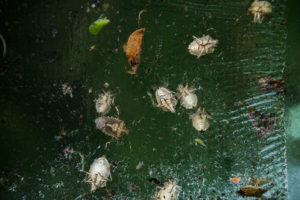 With apple harvest well underway, and most pests other than the brown marmorated stink bug declining in numbers; this will be the last Pest Update for 2020.
With apple harvest well underway, and most pests other than the brown marmorated stink bug declining in numbers; this will be the last Pest Update for 2020.
First-generation BMSB adults continue to emerge across the region, with about 90% of the population having emerged in Lincoln County, but only about 25% emergence complete in Haywood County (see Fig. 1 below). Estimated emergence in Henderson and Wilkes County is 45 and 62% complete, respectively. Pheromone trap captures continue to increase in Henderson County (see Fig. 2 below). With first-generation adult emergence continuing for the next several weeks, expect trap captures to continue to increase. In 2018 and 2019, BMSB trap captures peaked about this time, but we are currently about 200 DD behind where we were at this time in previous years.
It should be noted that BMSB pheromone trap captures are considerably lower in commercial apple orchards compared to non-orchard sites or orchards at the research station. Mean trap captures last week averaged about 5 and 32 per trap in commercial orchards and other sites, respectively. Nonetheless, with adult activity expected to continue for the next month, protection of highly susceptible cultivars (i.e., Granny Smith, Pink Lady) should be considered.
The only two other insect pests of potential concern are the oriental fruit moth and apple maggot, both of which exhibited declining trap captures during the past week. It is not typical for these pests to develop for the first time this late in the season, so the threat of damage should be considered very low for the remainder of the season.
While this is the last written report of the season, insect population tables and graphs will continue to be updated through the end of the month. Also, if something unexpected occurs, we will send a pest alert update.
Learn more about southeastern apple insect pests at the Apple Insect Management page.
2020 Average Weekly Trap Captures
| HENDERSON COUNTY | |||
| Insects per trap | |||
| Aug 24 | Aug 31 | Sep 7 | |
| Codling moth | 0.0 | 0.1 | 0.0 |
| Oriental fruit moth | 6.7 | 4.3 | 2.6 |
| Tufted apple bud moth | 5.0 | 0.5 | 0.0 |
| Redbanded leafroller | 0.0 | 0.0 | 0.0 |
| Obliquebanded leafroller | 0.0 | 0.0 | 0.0 |
| Lesser appleworm | 2.0 | 0.0 | 0.0 |
| Apple maggot (abandoned and research orchards) | 1.7 | 7.0 | 2.3 |
| Brown marmorated stink bug (commercial) | 2.4 | 3.7 | 7.3 |
| Brown marmorated stink bug (unsprayed) | 11.3 | 23.5 | 31.8 |
| Spotted tentiform leafminer | 0.0 | 0.0 | 0.0 |
| Dogwood borer | 20.0 | 27.0 | 13.0 |
| Peachtree borer | 30.0 | 18.0 | 14.0 |
| Lesser peachtree borer | 40.0 | 38.0 | 33.0 |
| San Jose scale | 260.0 | 225.0 | 35.0 |
*Note that these averages illustrate only the timing of insect emergence and fluctuations in populations, and are not representative of population levels in any given orchard. The only way to have an accurate assessment of an individual orchard’s populations is to set up traps in that orchard.
2020 Accumulated Degree Days
| HENDERSON COUNTY | ||||
| Aug 24 | Aug 31 | Sep 7 | ||
| Codling moth (Biofix 4/20) | 2216 DD | 2405 DD | 2567 DD | |
| Oriental fruit moth (Biofix 3/30) | 2994 DD | 3223 DD | 3417 DD | |
| Tufted apple bud moth (Biofix 4/27) | 2736 DD | 2965 DD | 3159 DD | |
2020 Pest Trends (Click to Enlarge)
Visit WNC Orchard Insect Populations for archived posts.
Additional Resources
- Apple Insect Management Overview
- How to Monitor Apple Insect Pests (IPM)
- Brown Marmorated Stink Bug in North Carolina
- Integrated Orchard Management Guide for Commercial Apples in the Southeast
- Walgenbach Entomology Lab




